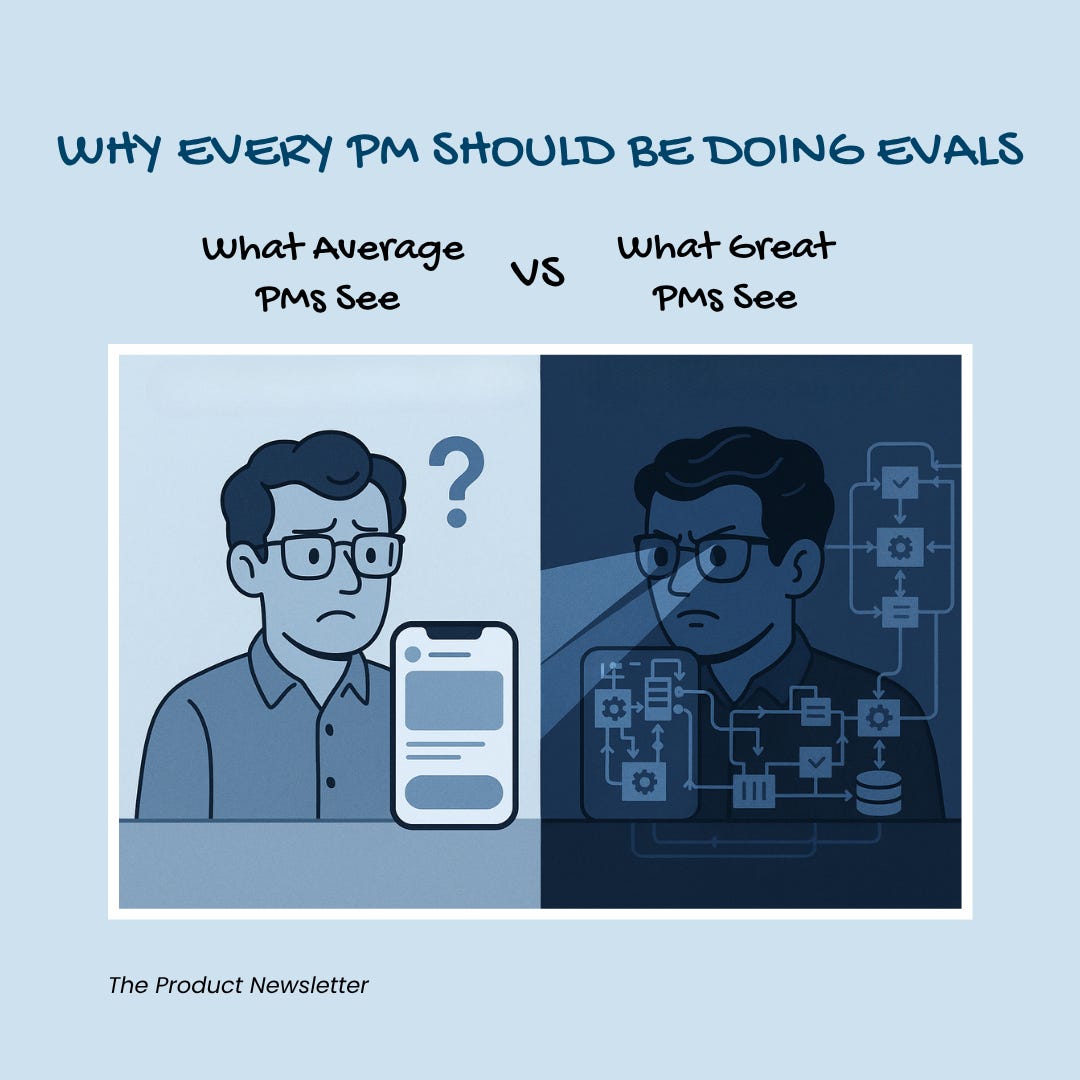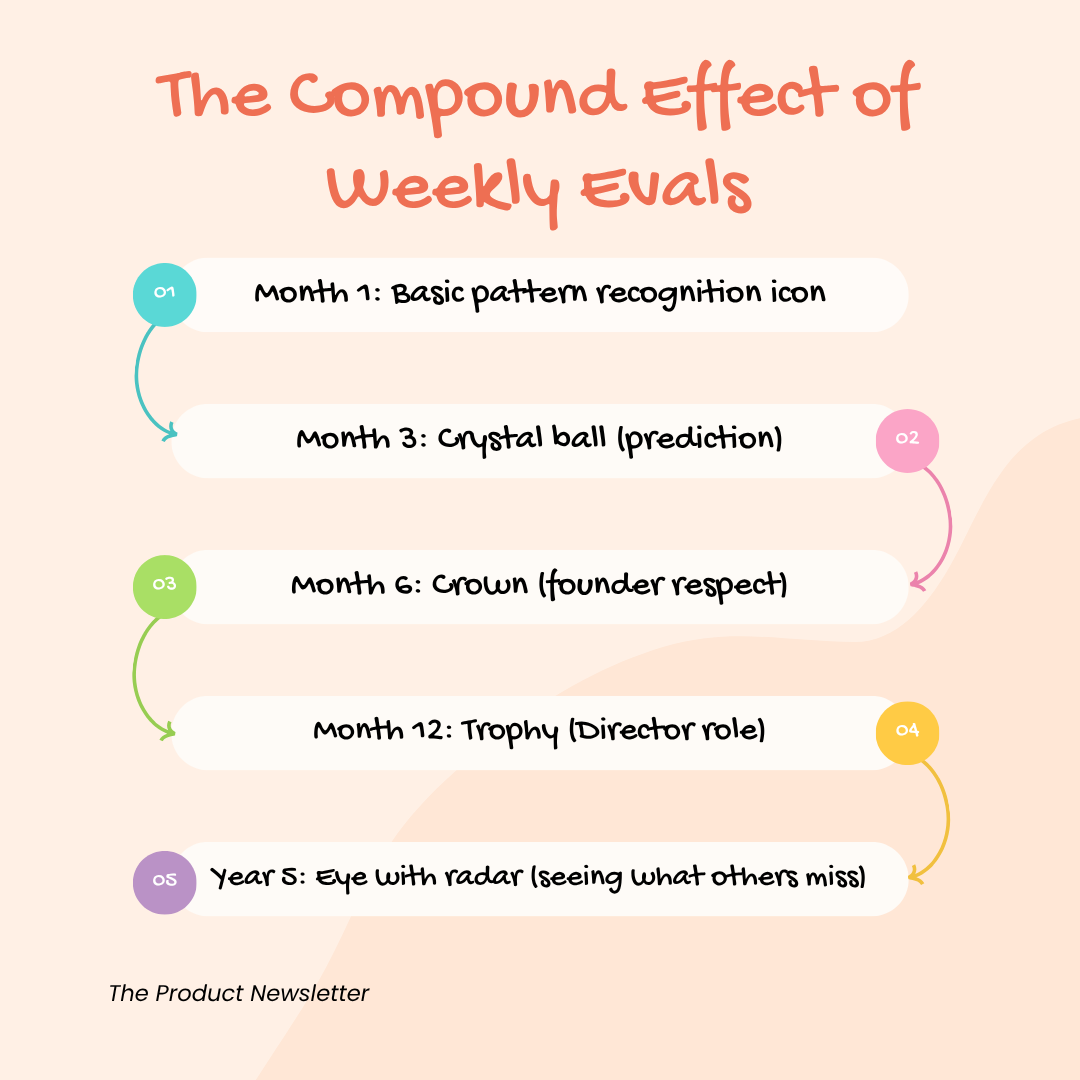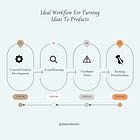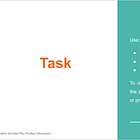Why Every PM Should Master Product Evals (feat. Threads App Case Study)
Most PMs don’t know how to eval products. This article aims to fix that with a 7-step framework, a Threads app eval, a free 1:1, and access to my Eval Club
Hi 👋! You are reading one of my free articles - I hope it helps you level up your PM skills. Want to go deeper? My premium subscribers get exclusive frameworks and strategies I don’t share anywhere else - content that has helped hundreds of product managers land better roles and make bigger impact.
Ready to accelerate your product career? Subscribe now for premium access and join a community of exceptional PMs gaining an edge every week.
Now, let’s dive into today’s insights…
I rejected a brilliant PM candidate last year.
They had everything: FAANG pedigree, shipped major features, glowing references. But when I asked them to break down why Spotify’s podcast strategy was failing, they froze.
“I haven’t worked on podcasts,” they said.
That’s when I knew they’d hardly make it to Staff level.
The best PMs I know —the ones who become CPOs, build unicorns, and get poached with 7-figure packages—share one habit: They can’t stop deconstructing products. Every app they use. Every checkout flow they encounter. Every failed launch. They are constantly asking: Why did they build it this way? What's the hidden strategy? What would I do differently?
This habit has a name: Evals. And if you’re not doing them, you are playing product management on hard mode with one hand tied behind your back.
The Eval Mindset: See Products as Systems, Not Features
An Eval (short for evaluation) is a strategic teardown of any product. You reverse-engineer the decisions, decode the metrics, and form an opinionated view on what’s happening.
Think of it like a chef tasting a dish and immediately knowing which techniques were used, which corners were cut, and why the seasoning is slightly off.
In this case, you are doing it with products. Take Slack as an example, most PMs see a messaging app, but eval-minded PMs see:
A Trojan horse for enterprise SaaS consolidation.
A data play disguised as communication.
A platform betting that async work will eat meetings.
A growth loop powered by bottom-up adoption.
This is the difference between feature-level thinking and system-level thinking. And in 2025’s market, system-level thinkers win.
The Real Secret
Evals are so powerful, they force you to think like an owner, not an employee. When you Eval Airbnb, you are not thinking “what features should we ship?” You’re thinking, “How do we win the next decade?”
When you Eval Figma, you are not debating button placement but understanding why Adobe paid $20 billion.
That shift in perspective, from feature factory to strategic thinker, is what separates good PMs from great ones. And great ones from legendary. Never stop asking, “What would I do differently?”
The 7-Point Framework For Running Killer Evals
Here’s the exact framework I use (and now require from every senior PM I mentor):
1. The One-Liner
What is this product in 10 words or less? If you can’t explain it simply, you don’t understand it.
2. The Real User
Who is the real user? Not who they say it’s for but who uses it? And more importantly, who uses it habitually?
3. The Superpower
Every great product has one thing it does 10x better than alternatives. Find it.
4. The Achilles Heel
Where does it break? What assumptions are they making that could be wrong?
5. The Hidden Metric
What are they optimizing for? (Hint: It’s rarely what they publicly claim).
6. The Counterfactual
If you had their resources but started from scratch today, what would you build differently?
7. The Strategic Play
Zoom out. Why does this product exist in their portfolio? What’s the 5-year chess move?
Let’s put this framework into action with a real example.
Case Study: Deconstructing Threads (Meta's $500M Speed Run)
1. The One-Liner
“Instagram’s text-first spinoff betting Twitter users want less chaos.”
2. The Real User
Who they wanted: Twitter power users exhausted by platform drama.
Who showed up: Instagram lurkers curious about the new shiny thing.
Who stayed: Almost nobody with real influence.
3. The Superpower
Distribution. 100M users in 5 days because of Instagram’s graph. No product in history has scaled faster.
4. The Achilles Heel
Zero identity. It’s the product equivalent of plain yogurt, inoffensive, forgettable, and nobody’s first choice. They optimized so hard for “not being toxic Twitter” that they forgot to optimize for “being interesting.”
5. The Hidden Metric
I’d bet my equity they’re measuring “Instagram users who opened Threads this month,” not “users who create original Threads content.” Classic vanity metric trap.
6. The Counterfactual
If I were building Threads today:
Vertical communities from day one (Sports Threads, Tech Threads, Book Threads).
Creator monetization before they even ask for it.
Aggressive curation tools let users build and nurture their algorithms.
Time-boxed content: What if posts expired after 7 days?
The mistake was trying to be Twitter-but-nice instead of building something Twitter could never be.
7. The Strategic Play
Threads isn’t competing with X. It’s Meta’s insurance policy for the post-feed future.
If AI starts surfacing social content in search results (already happening), whoever owns the public conversation graph becomes the new Google. Threads is Meta’s hedge against becoming irrelevant in an AI-first world.
The Compound Effect of Weekly Evals
I observed a couple of changes when I started doing one Eval per week:
Month 1: My product sense sharpened and I started spotting patterns.
Month 3: I could predict which features would fail before launch.
Month 6: Founders started asking for my take on their strategies.
Month 12: I landed a Director, PM role because I out-analyzed every other candidate.
Year 5: I can walk into any product review and immediately spot what everyone else is missing.
I urge you not to think of Evals as just an exercise. They can accelerate your career.
Your Next Steps (Start These Today)
Pick your first target. Open your phone. Choose the last app you downloaded. That’s your first Eval.
Set a weekly reminder. Saturday mornings or evenings, one Eval. Make it a ritual.
Share your takes. Post them on LinkedIn, in Slack, in your newsletter. The feedback will sharpen your thinking.
Level up with constraints. Try these challenges: .
Eval a product in a category you know nothing about.
Eval a failed product and explain how to save it.
Eval your product (warning: this one stings and will humble you).
Ready to improve your knowledge of evals?
Here’s your first assignment 👇🏾
Eval the last product that made you say, “How did they think of that?’’ Now, break it down using the 7-point framework I listed above. Post your analysis and tag me on Substack notes.
The best Eval gets a 1:1 feedback session where we will sharpen your strategic thinking together.
Because in a world where everyone can prompt AI to write a PRD, the PMs who can truly see products will be the ones who matter.
Start your first Eval today. Your future CPO self will thank you.
P.S. If this resonated, I’m launching an Eval Club where we tear down one product weekly as a group. The first cohort starts next month. Drop a comment if you want in.
ICYMI: Most PMs understand what their role is, but the how is still a bit unclear. How do you go from ideation to launch? How do you create a strategy deck that actually sways stakeholders toward decisions that benefit your product? These articles break down the how. Think of them as your blueprint for strategic execution.
This piece breaks down the step-by-step process of turning an idea into a fully fleshed-out product you can put in users’ hands tomorrow. Read it here.
PRDs aren’t the only documentation product managers are responsible for. As you grow, you’ll start trading roadmap docs for strategy slides. So how do you create a deck that clearly communicates your product strategy to business stakeholders? This article breaks it down in 6 steps.







Most PMs treat products like IKEA furniture: follow instructions, assemble features, hope it holds.
This? This is how you actually build judgment.
Evals force you out of “what should we build next?” and into “what game are we playing — and how do we win it?”
It’s not about pixel-perfect teardown aesthetics. It’s about developing product taste so sharp it could slice through a roadmap.
Also: if you can’t spot the real user, hidden metric, and strategic chess move? You’re not a PM — you’re a backlog administrator.
Hi Salem,
I'd love to be in the evals cohort.
Thank you.